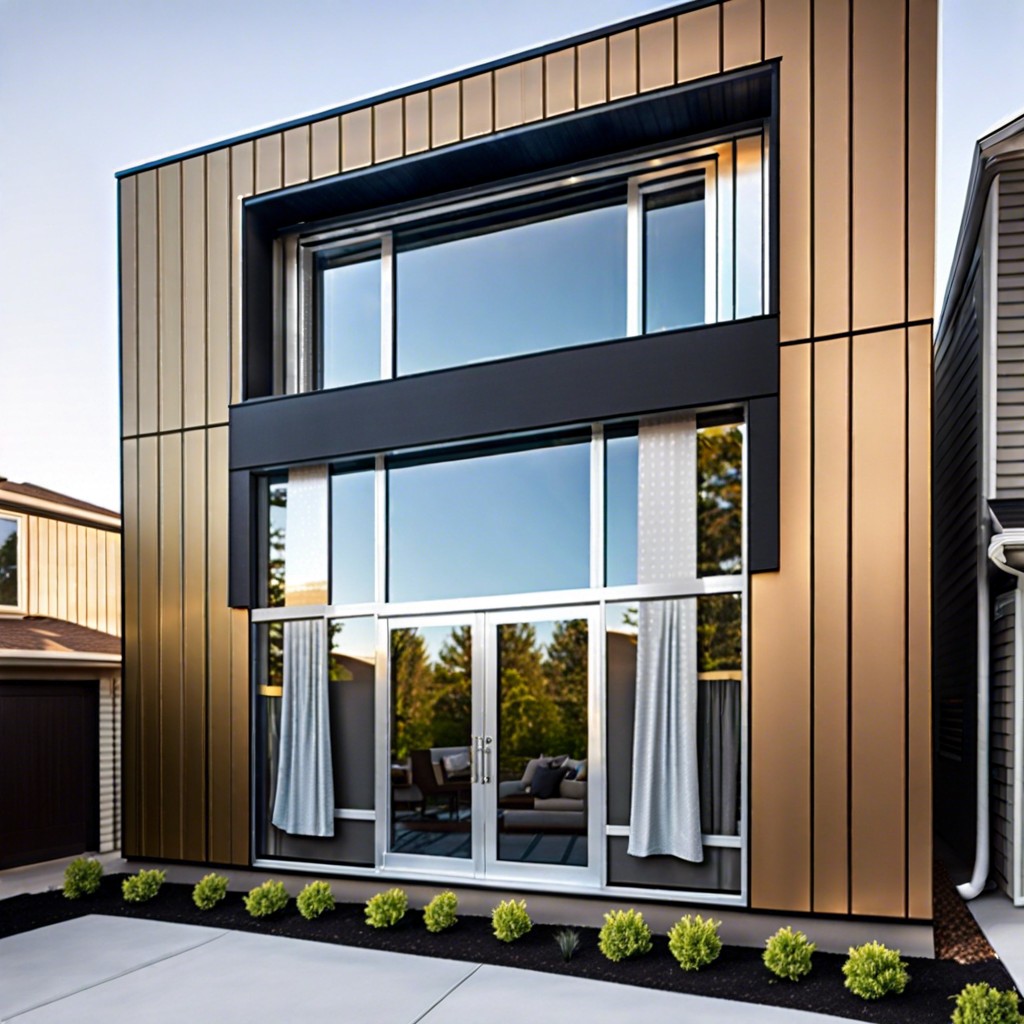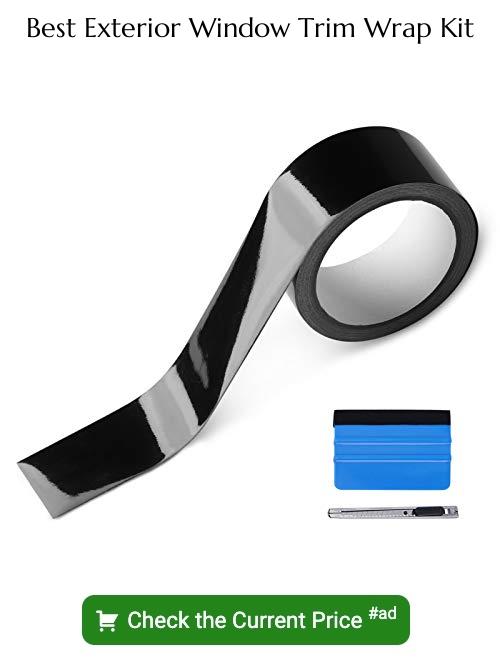Learn about the factors that affect aluminum window wrap cost and how to budget for your home improvement project.
Key takeaways:
- Aluminum window wrap protects against wood rot and paint peeling.
- Factors affecting cost: material quality, labor rates, size/number of windows, climate, market fluctuations.
- Aluminum wrap is more durable than vinyl and wood.
- Cost-saving tips: bulk purchasing, standard colors, off-peak installation, experienced installer, partial wrap, reusing existing trim.
- Replace existing wrap if damaged, corroded, or lacking energy efficiency.
Overview of Aluminum Window Wrap

Aluminum window wrap, also known as cladding or capping, serves as a protective cover for a window’s exterior wood trim. This material shields against the elements, significantly reducing maintenance by preventing wood rot and paint peeling. As a durable, weather-resistant option, it excels in extending the lifespan of window frames and sills.
Due to its lightweight nature and malleability, aluminum wrap conforms well to various window shapes and styles. It comes in a spectrum of colors to complement different home exteriors. Additionally, its reflective properties can contribute to energy efficiency by deflecting sunlight and reducing heat gain.
Installation is a precise task that involves measuring, cutting, and securing the aluminum wrap neatly around the window frame. The process not only improves curb appeal but also enhances the overall insulation of the window system when done professionally.
Factors Affecting Aluminum Window Wrap Cost
The price of aluminum window wrap hinges on several variables that you should consider before initiating your project. Material quality stands at the forefront; higher-grade aluminum will offer greater durability but at a steeper cost. The thickness of the aluminum also comes into play, with thicker wraps providing better insulation and longevity, inevitably influencing the overall expense.
Labor rates can significantly sway the final price tag. These rates are dictated by the complexity of the installation process and the prowess of the contractors. Opting for skilled professionals might elevate the initial investment but ensures a flawless application, which is essential for long-term performance and efficiency.
The size and number of windows will directly impact the amount of material needed, and consequently, the cost. Larger windows demand more wrap, escalating material requirements and labor time. Climate also factors in; areas with extreme weather conditions may necessitate higher-grade wraps to withstand the elements effectively.
Lastly, the cost of the wrap is influenced by market fluctuations in the price of aluminum. As a globally traded commodity, its cost varies with market dynamics, supply, and demand. Regular tracking of market prices can help you gauge the most cost-effective time to purchase materials.
Understanding these factors provides a clearer picture of how the costs accumulate and can assist in making informed financial decisions for your aluminum window wrap project.
Cost Comparison: Aluminum Wrap Vs. Other Window Wrap Materials
Aluminum window wrap stands out for its durability and longevity when compared to alternative materials like vinyl and wood. Despite a higher initial investment, the lifecycle costs are usually lower due to aluminum’s resistance to weathering, decay, and insect damage. Vinyl, a less expensive option, offers a broader color palette but may require more frequent replacements. Wood wraps, while aesthetically pleasing, demand regular maintenance and are prone to rot and insect damage, leading to higher long-term expenses. Homeowners must weigh these factors, considering the trade-offs between upfront costs, maintenance requirements, and lifespan when selecting a material best suited to their budget and the climate in which they reside.
Cost-Saving Tips for Aluminum Window Wrap Projects
Opt for bulk purchasing when wrapping multiple windows as suppliers often provide discounts for larger orders. This reduces the per-unit cost substantially, making the project more budget-friendly.
Select standard colors and finishes which are typically more affordable than custom options. Manufacturers usually charge a premium for non-standard selections.
Consider performing the installation during the off-peak season. Contractors may offer competitive pricing during slower periods to maintain their workflow.
Hire an experienced installer to ensure the wrap is applied correctly the first time, preventing future repairs or replacements due to poor installation, which can lead to additional costs.
Evaluate the necessity of a complete wrap. If the existing window frames are in good condition, a partial wrap could suffice, targeting only weathered or damaged areas.
Reuse existing trim when possible. If the trim is in good shape and matches the new aluminum wrap, reusing it can significantly cut down on material costs.
When to Consider Replacing Existing Aluminum Window Wrap
Assessing the condition of your existing aluminum window wrap is crucial for maintaining both aesthetics and functionality. Visible damage such as peeling, cracking, or fading indicates that the material’s integrity may be compromised. This can lead to exposure of the underlying window frame to elements, potentially causing further damage.
Corrosion is another red flag. Aluminum is generally corrosion-resistant; however, in highly salty environments or areas with acid rain, corrosion can occur. If you notice any powdery white residue or pitting on the aluminum surface, it’s time for a replacement.
Energy efficiency concerns also warrant a replacement. If you feel drafts near windows or have seen a spike in heating or cooling costs, the current wrap may no longer be providing an effective seal. Modern wraps come with improved insulation properties, contributing to energy savings.
Lastly, consider an update alongside other home renovations. Upgrading to more current materials or simply changing the color for a fresh look can enhance curb appeal. If you’re renovating siding or roofing, it’s an opportune time to coordinate your window wrap for a cohesive appearance.
Related Stories
- Aluminum Window Wraps: How to Install and Maintain for Durability
- 15 R&R Wrap Wood Window Frame & Trim with Aluminum Sheet Ideas
- Window Aluminum Wrapping: Benefits and Installation Process
- Aluminum Window Prices: Factors Affecting Cost & Buying Tips
- Will Window Prices Go Down in 2024? Accurate Market Predictions and Analysis
Recap

